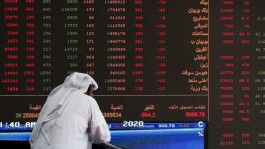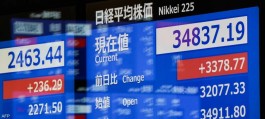Oil prices stabilized as investors monitored risk appetite in broader financial markets, offsetting the impact of progress in peace talks on Ukraine that could pave the way for increased crude supplies.
Brent crude remained near $63 a barrel after gaining more than 1% on Monday, while West Texas Intermediate crude stayed below $59.
Asian stocks followed Wall Street's gains, buoyed by expectations of further interest rate cuts by the Federal Reserve. Adding to the positive sentiment, US President Donald Trump and his Chinese counterpart Xi Jinping held their first talks since agreeing to a trade truce last month.
Impact of Ukraine talks on oil prices
Regarding Ukraine, Trump adopted a positive tone about the prospects for a ceasefire, after talks narrowed the gap in disagreements over his latest peace proposal.
If an agreement is eventually reached, the United States and other countries may ease sanctions on Russia, potentially boosting oil supplies in a market facing the prospect of a supply glut.
Warren Patterson, head of commodity strategies at ING Group, said: While oil is benefiting from the surge in demand for high-risk assets in the markets, peace talks will remain a pivotal factor.
He added: Any positive progress in these talks creates downside risks to prices, because it could remove one of the most significant supply risks.
Crude oil has declined this year, with futures contracts poised to record their fourth monthly drop in November, in what would be their longest losing streak since 2023.
This decline reflects increased production, as OPEC+, along with non-OPEC+ countries, adds more barrels to the market. Crude oil inventories have been above the five-year average since late July, according to BloombergNEF.









































